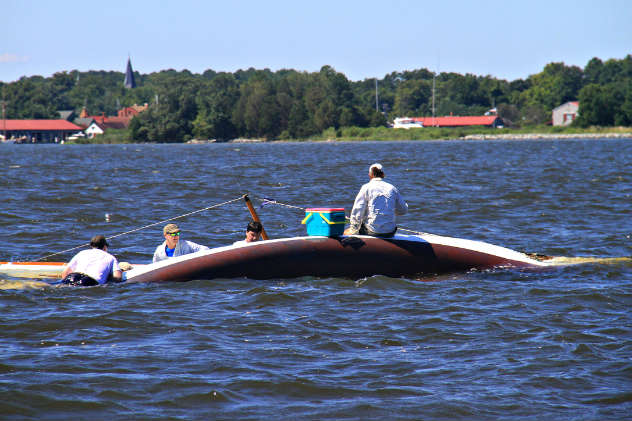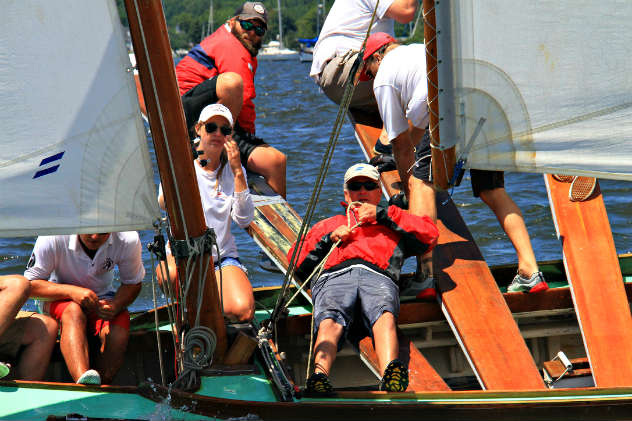Log Canoe news: Corbin Penwell piloted the Chesapeake Bay log canoe Island Blossom to an unprecedented sixth-in-a-row win in the Log Canoe Governor’s Cup Regatta held July 30 at the Miles River Yacht Club.
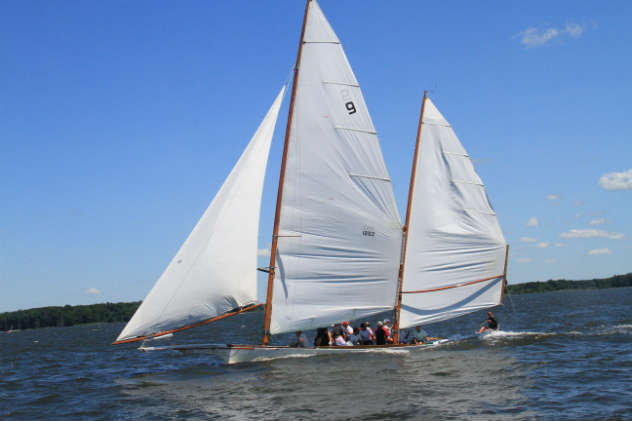
It was a battle of attrition…as only four of the 11 canoes registered crossed the finish line. Fluky 8-12 knot winds took their toll on the delicately-balanced boats as one after another treated their crews to a refreshing bath in the tepid Miles River waters.
Island Lark came in second with Persistence and Noddy completing the podium. This was the Governor’s Cup 90th year.
The Island Blossom was built in 1892, by William Sidney Covington in Tilghman, Maryland. She is a 32 ft 7.5 in (9.944 m) sailing log canoe with a beam of 6 feet 7.5 inches (2.019 m). The canoe is privately owned by the family John C. North II, descendants of Mr. Covington, and races under No. 9. She is one of the last 22 surviving traditional Chesapeake Bay log canoes. ~Craig Ligibel
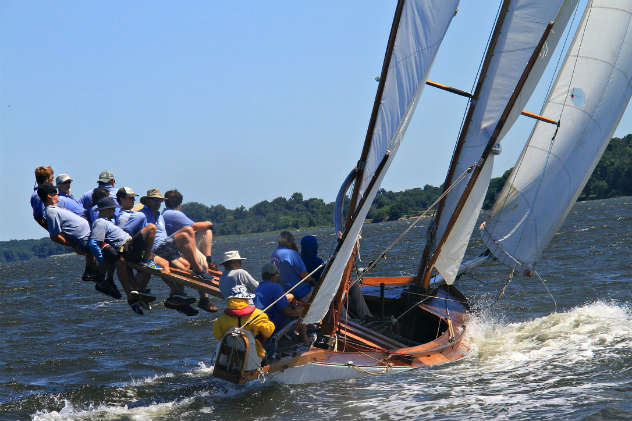
Here’s the remaining log canoe race schedule:
Aug 12-13: TAYC/CBYC Oxford Regatta
Aug 19-20: CYC Series
Aug 26-27: TAYC Heritage Regatta
Sept 9-10: MRYC Labor Day Series
Sept 16: MRYC Higgins/Commodore Cups
Sept 17: CBMM Bartlett Cup
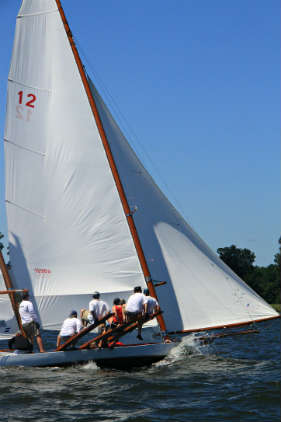
Not familiar with log canoes? Here’s a description from the Mariners’ Museum website:
Originally built by the native Powhatan tribes along the Chesapeake Bay, these boats were adopted by early English settlers, who discovered that the sturdy craft could handle the rough waters of the Bay and carry a heavy load. The canoes were made of logs from loblolly pine or tulip poplar trees. The log was slowly burned, then the ashes were scraped from inside. The English settlers added a sail to the canoe, increasing its speed. Depending on the size of the tree, a canoe could be thirty feet long and up to five feet wide. With an ample supply of logs, the canoe became the standard workboat for the Bay until the 1900s. Log canoes were not constructed at a shipyard, but on the owner or builder's property. Requiring only simple tools and no plans, the log canoe was inexpensive to build and easily replaced.
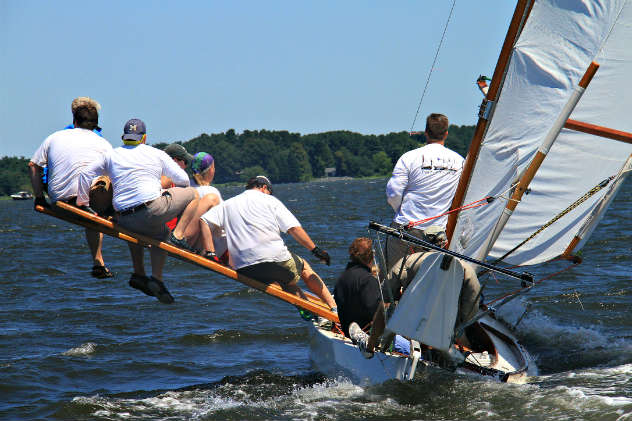
Log canoe fleet oystering above Newport News, Virginia on the James River, 1906 As the supply of large trees dwindled, many builders began using three to nine logs in the construction of canoes. One of the Chesapeake Bay regions known for log canoe building is Poquoson, Virginia. The Poquoson builders used three logs and added sails, a centerboard, and washboards for ease of tonging. The sailing canoe became a common sight on the Bay, and sailing competitions developed. The racing canoe had larger sails and hiking boards, allowing the crew to keep the boat upright.
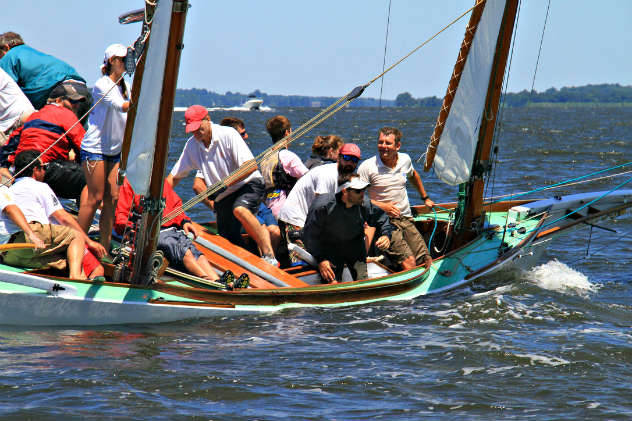
During the summer months many watermen turned their sailing canoes into racing boats. Log canoe racing has become a tradition on the Bay. Larger sails were added to the log canoe to increase speed, but a problem resulted: in a strong wind the boat can tip, so hiking planks were added and crews used their body weight to balance the craft. These races continue today, but fewer people can afford to race the log canoe. Their wooden hull and canvas sails are expensive to keep in working order.
